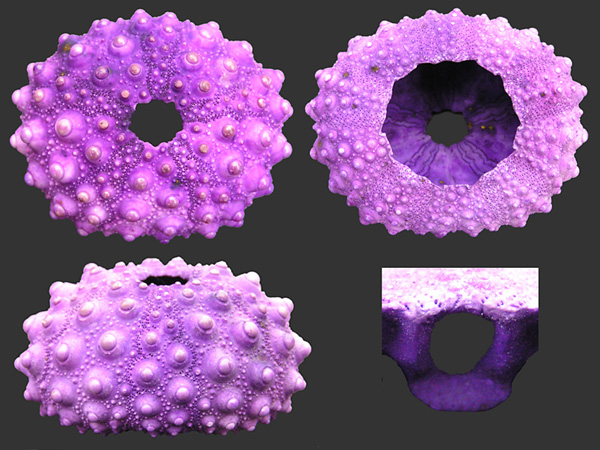|
Heterocentrotus trigonarius Lamarck 1816 |
|
|
Family: Echinometridae |
Order: Echinoida |
|
Locality: Indonesia, 2008 |
Dimensions: 66 x 51 x 32 mm |
|
|
|
|
I got this specimen without taxon,
but it belongs clearly to the Echinometridae and
according to the number of pore pairs it is probably Heterocentrotus
trigonarius. However, in all my literature I
cannot find any remark to such a bright lilac test colour (one could suppose
that it is a fake). Thus, it is only a colour morph or is there another
species beside H. mammilatus and trigonarius? Already Th. Mortensen in his “a Monograph of the Echinoidea, III.3, Camarodonta.
II, Variation. Great variation
obtains in regard to the shape, size and colour of the primary spines, as
well as in the character of the secondary spines, whether pointed or
truncate, flattened. So great is the difference between the extremes,
that one must find it hard to believe that they can be one and the same
species (the two figures on Pl. 8 of A. H. Clark's paper of 1931 give the difference
between specimens with pointed or truncated secondary spines excellently). H.
L. Clark, Op. cit. 1912, p. 379, pointing out the fact that
"specimens from Mauritius are brown with distinct shades of green and orange-red
on the primaries, while specimens from the Paumotus
are deep purple, with very little variation
except in shade", thinks that these extremes "will probably at some future time be designated as
subspecies". But specimens from intermediate localities connect the two extremes, as |
|
